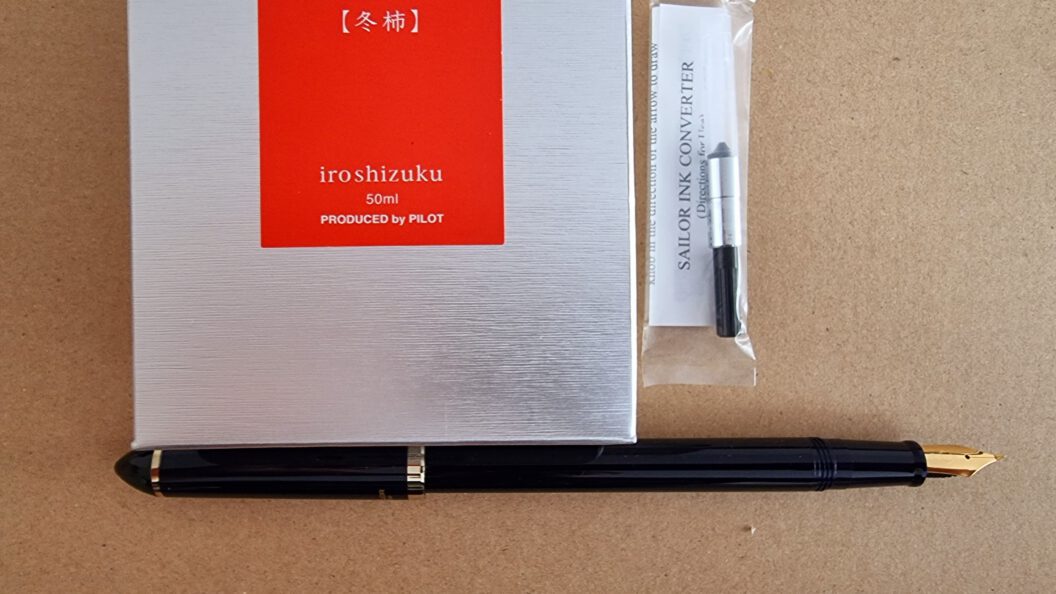TL;DR: This website is (mostly) about drawing with fountain pens. How did it all start? With two fountain pens, both Sailor Fude DE Mannen (the 11-0127 series) and two Pilot Iroshizuku inks.
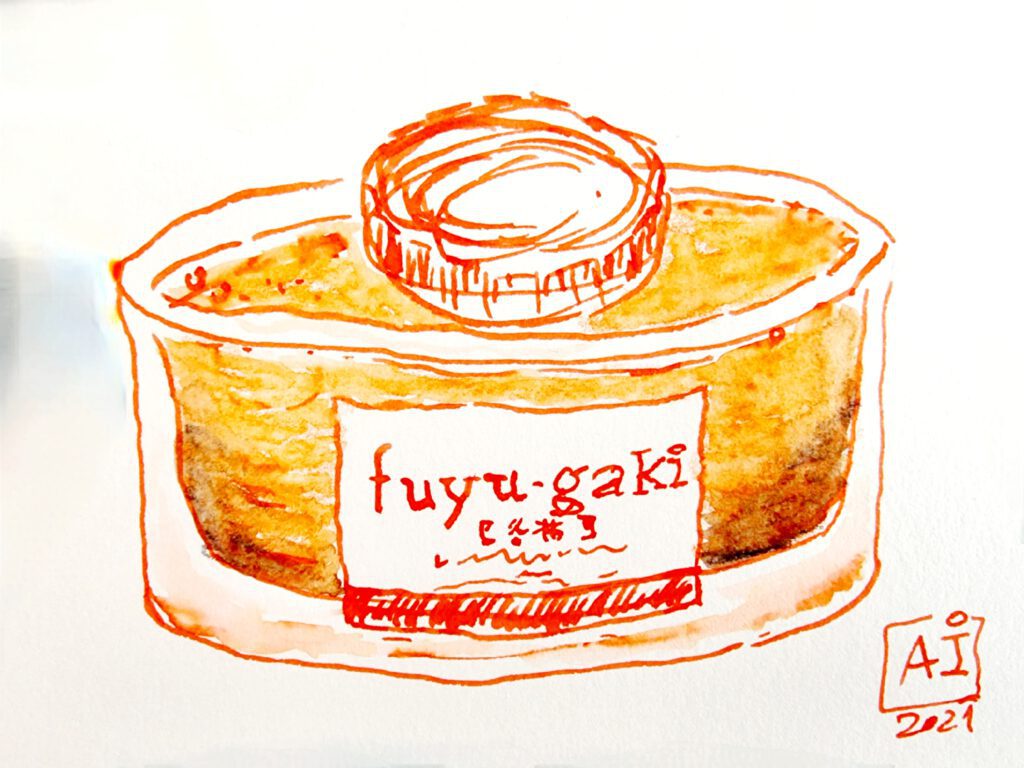
My first painting in ink was of the ink-bottle I used to ink that pen (see Figure 1). I had not used fountain pens for more than three decades. I had never used a converter before. But I got inspired by the amazing urban sketchers that shared their work and skills and advice. Liz Steel, Teo Yi Chie (parkablogs), Tina Koyama (Fueled by Clouds & Coffee) were my guides, even if they did not know it. Many thanks.
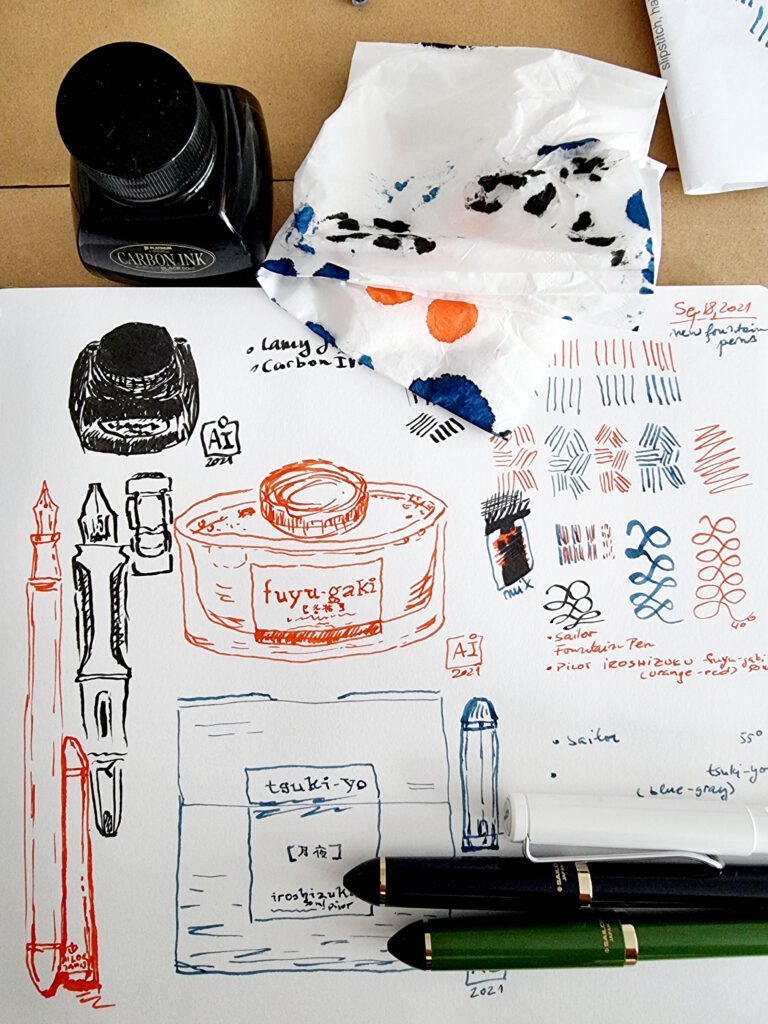

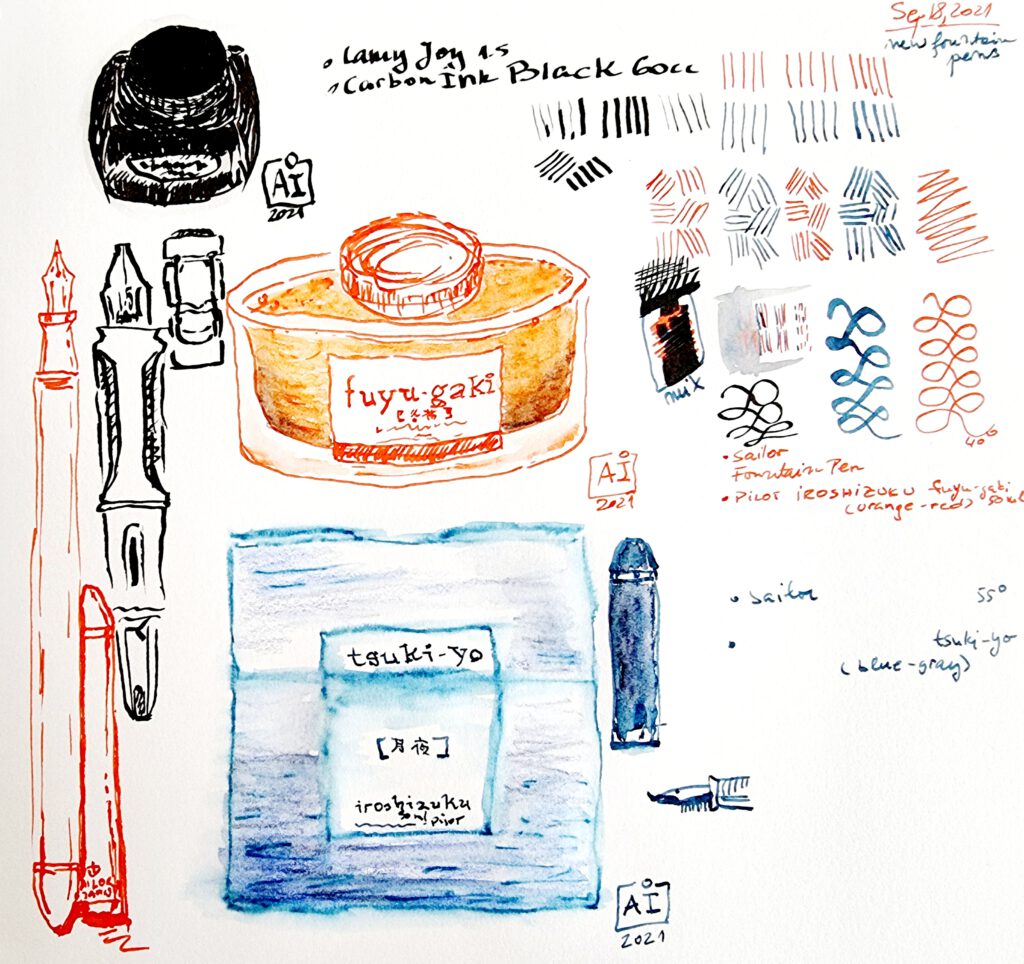
Even this simple, deeply flawed painting this took much time to do (see Figures 2a, 2b, and 2c). I started with the contours (Figure 2a), and the inked pens did very well. Then I used colored pencils, of the water-soluble kind (Figure 2b).
I was planning to use a water-brush around the contours, and blend nicely the pencil. With a thin water brush, how difficult could this be? Well, I put the watercolor on paper, and the resulting pools and strokes were anything but controlled. They started to merge with the ink, faster than I could blot them. The painting of the Tsuki-Yo ink bottle got ruined quite fast, but luckily I was able to save the Fuyu-Gaki painting (Figure 2c). I learned much that day, albeit, not enough.

But I forgot the previous step in drawing with fountain pens: inking them. What an adventure! (see Figures 3a, 3b, and 3c) I did not know how clumsy I was (not too much) or how much damage the Pilot Iroshizuku inks could do if they would fall on the floor, so I took a spot where I could not lose much, opened first the redder of the two inks on a fort made of cart board and napkins (Figure 3a), placed on top of a portable red table, and took ages with every step. I knew nothing about fountain pens, including they could not bite 🙂
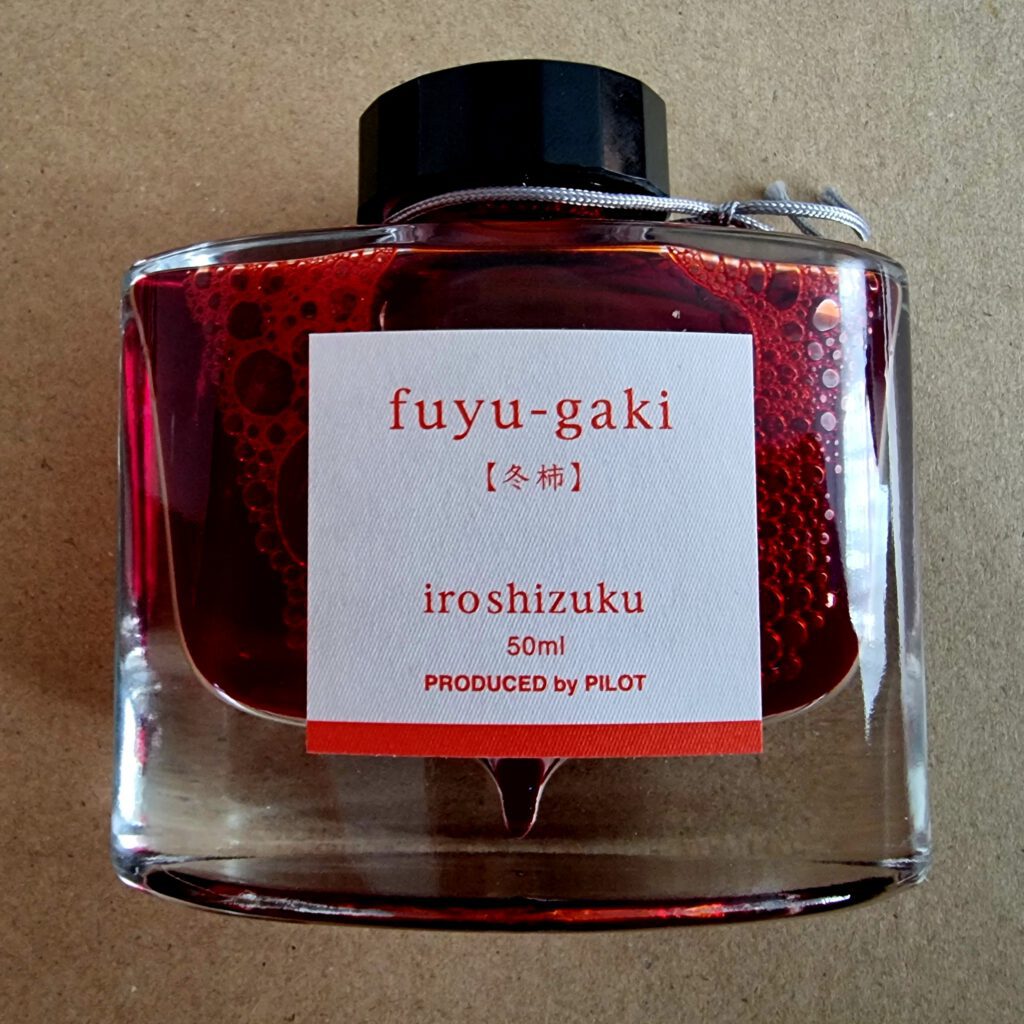
After building the fort, I carefully unwrapped the ink bottle (Figure 3b). It looked mysterious and slightly dangerous to me, at the time. It even had bubbles due to my shaky handling. Today, it’s one of my favorite inks and I know a bit of water can easily wash it away.

When I got to inking the pen (Figure 3c), my hands were shaking, so it took some tries. I had a mountain of napkins nearby, and wiped the pen for about ten seconds. Almost dried out the nib… (Never mind the pen color – ink color mismatch, which still makes it very confusing when picking up the pen from the kit.)
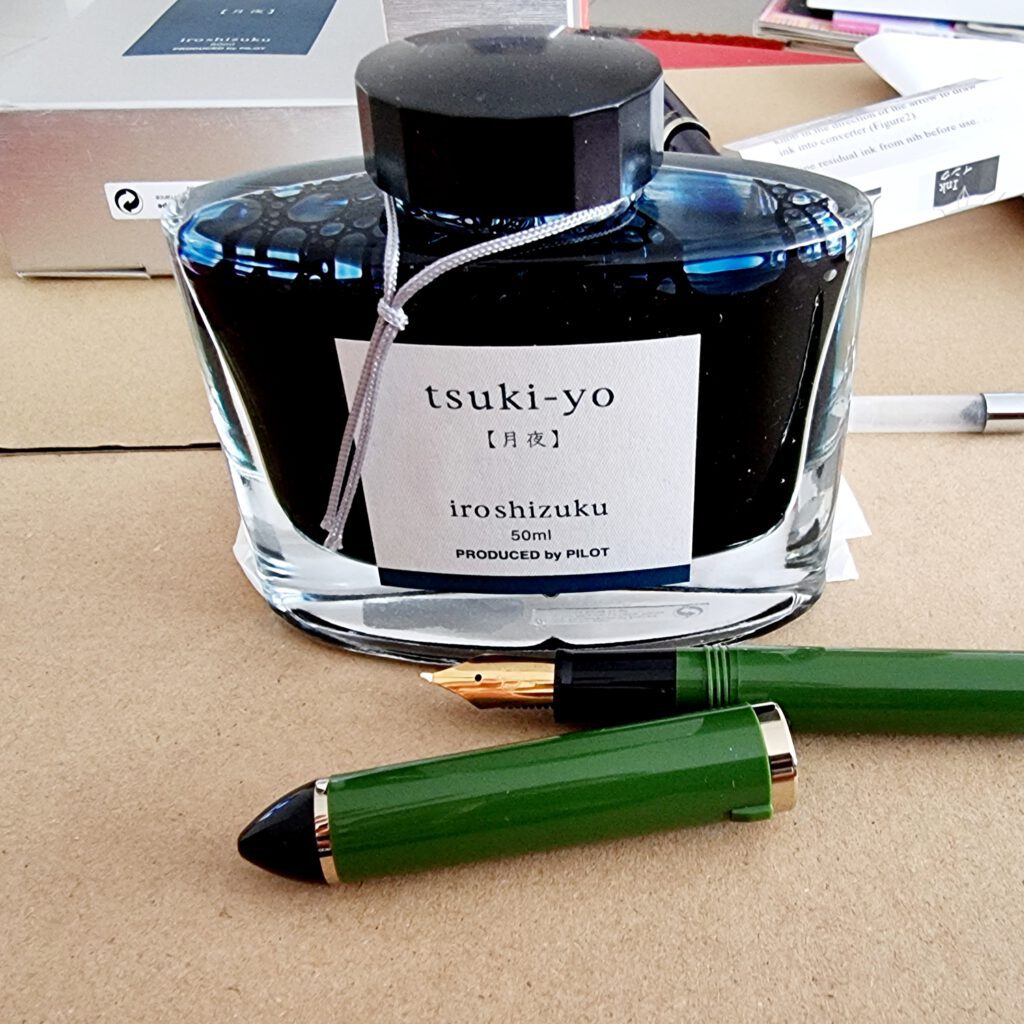
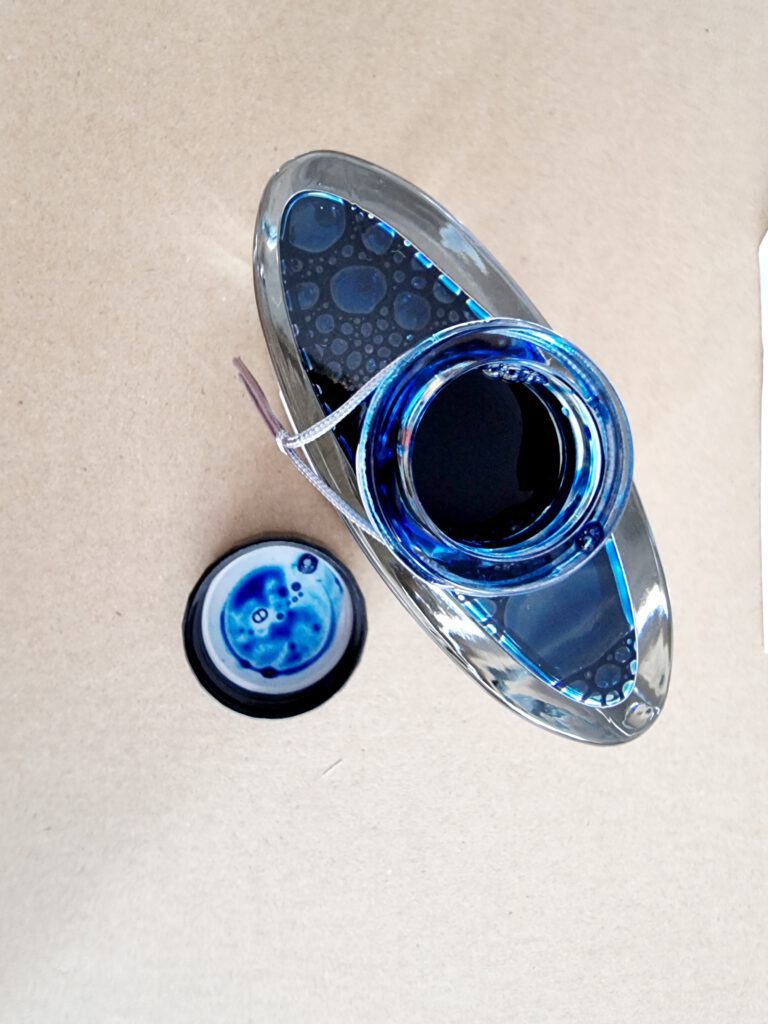
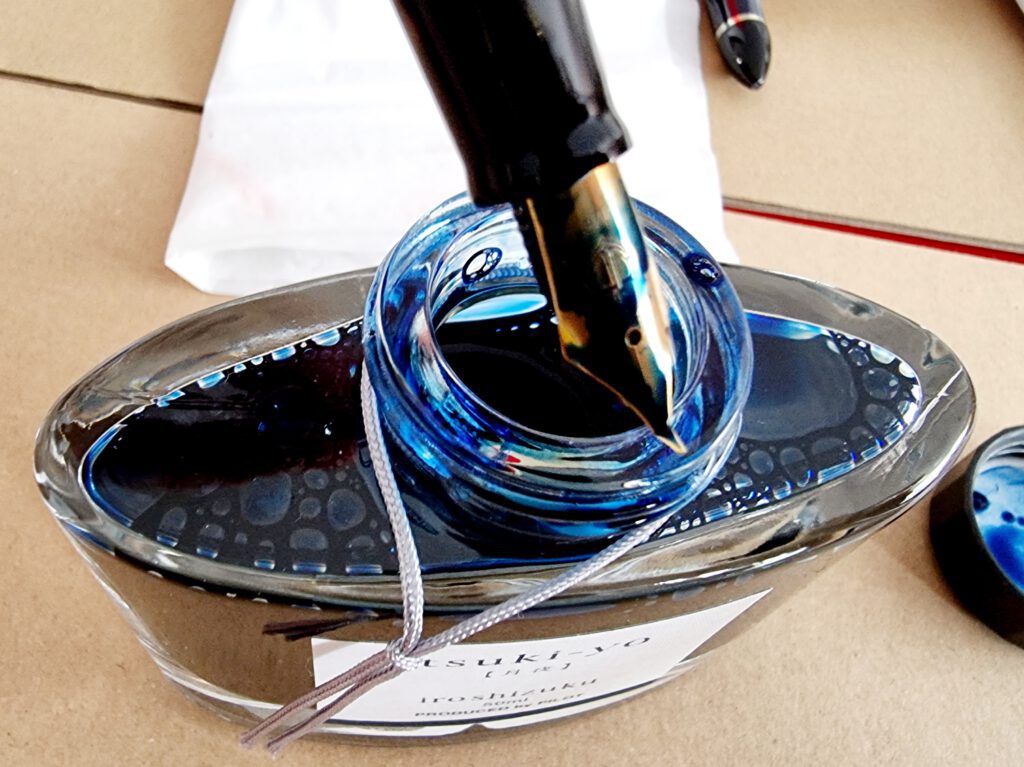
It went much easier with the Tsuki Yo and the other Fude DE Mannen pen, the Navy Blue (see Figures 3d, 3e, and 3f). By now, I kind of knew what I was doing, at least in terms of inking pens.
But these are good starter pens and generous wet inks, so all went well. It was great to have two pens with two inks, and it was time to finally draw something.
So, here it comes…

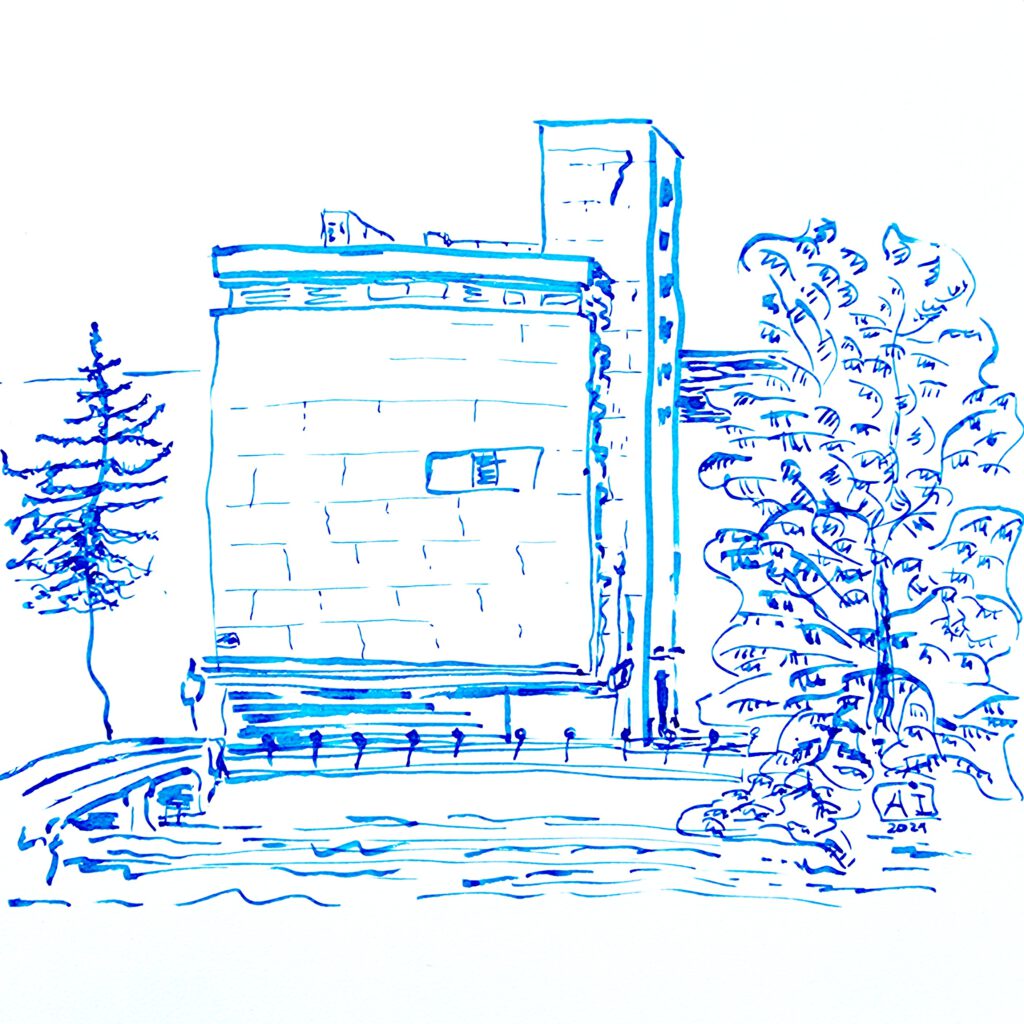
Fountain pens for drawing! Drawing with fountain pens!
I started my ‘real’ drawings with a drawing at a table (Figure 4a). We sat at Hinoki in Rotterdam, the Netherlands, and I drew, with much concentration, a view of the Steigersgracht (Figure 4b). I doubt there are many people who know Steigersgracht, and way fewer would ever see this very basic drawing. But, for me, it was a monumental achievement.
After this ‘real’ drawing – which now looks to me like the very basic rolls of a toddler -, we moved to a complex subject: drawing Saint Lawrence Church (Sint Laurenskerk) in Rotterdam, and the plaza in front of it, and a bit of the High Street (Hoogstraat). This is a major gothic church, whose building started in 1412, with its high tower to be concluded in 1548. They built faster in those days…
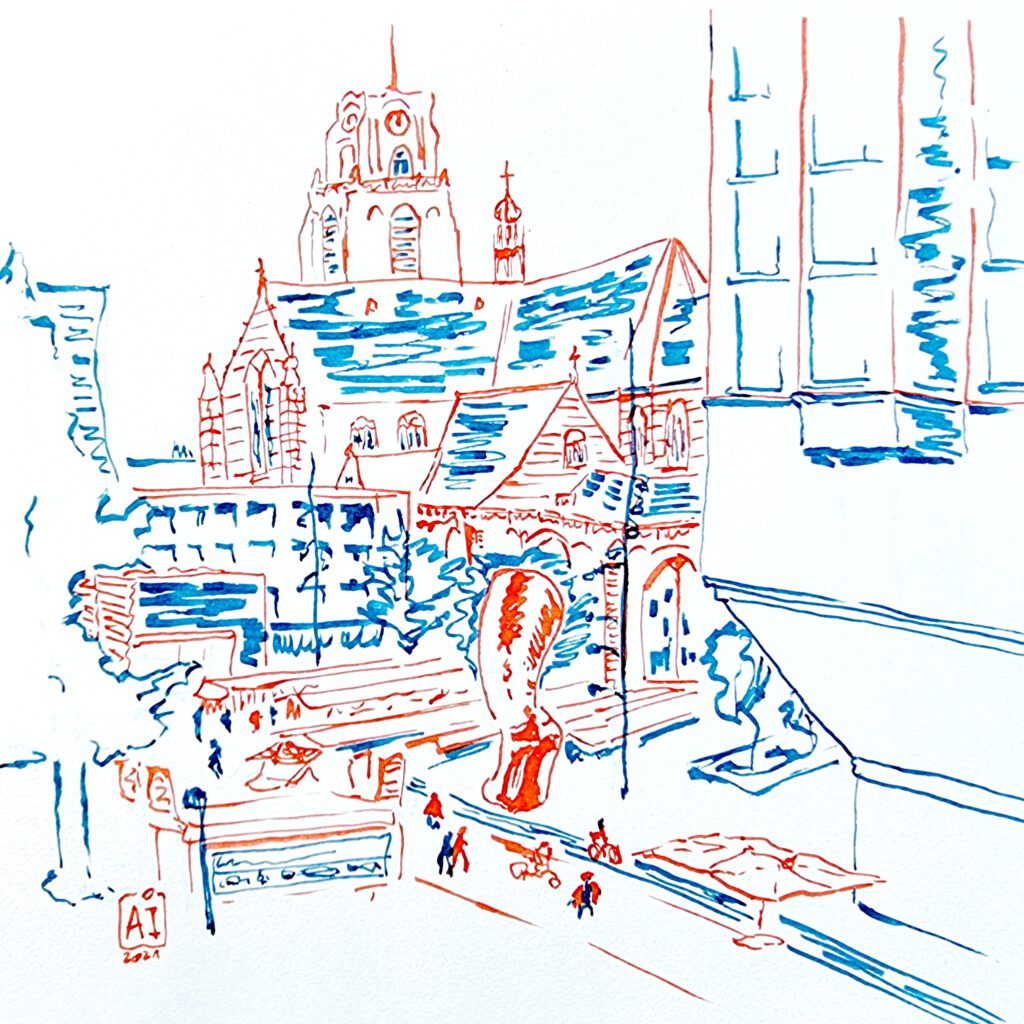
For this drawing of Sint Laurenskerk, we took seats on the palisades of the Centrale Bibliotheek Rotterdam, an excellent spot to sketch people without disturbing anyone. Figure 4c depicts the results. Not great, but the tea on the terras was excellent.
Some technical details:
- The bamboo green Sailor Fude De Mannen has a Fude (nib, brush) angle of 55 degrees. Sailor code: 11-0127-767. It’s a long pen capped, at 16.9 cm (6.7 in), but very light, at 12 grams without ink. Cost: between 15 and 20 EUR (or USD), depending on availability in shops. About 6 EUR, straight from Japan, excluding shipping.
- The navy blue Sailor Fude DE Mannen is similar, but its Fude has an angle of 40 degrees. Sailor code: 11-0127-740. (I find it easier to use).
- (There exist many other pens with steel Fude nibs, e.g., the Sailor Profit 10-0212-740, and also the famous 21K-gold Fude of the Sailor 1911 Special Nib Naginata Fude. You can also get thin nibs, typically EF-tipped, turned into Fudes at good nibmeisters, e.g., Pablo Carrasco from FPNibs.com.)
- The Pilot Iroshizuku inks cost 25-30 EUR per 50 ml bottle. They’re not the cheapest, but they have an excellent reputation and the price is reasonable.
To conclude:
I didn’t know what I was doing, but in trying all these things out I discovered a new pleasure — turns out fountain pens are for drawing.
Enjoy the day!

